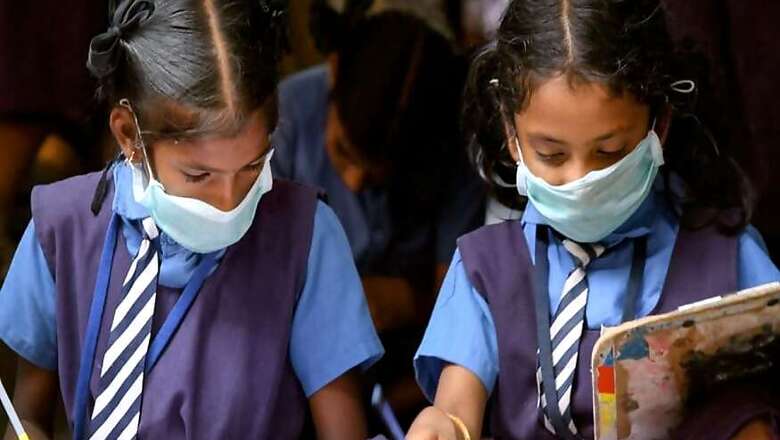
views
The fifth tranche of the Centre’s Covid-19 economic relief package on Sunday announced the launch of the PM e-Vidya scheme for multi-mode access to digital and online education that sought to combine a range of measures, including development of new e-content, earmarking of TV channels on DTH and use of radio among others.
Online education has been viewed as the primary mode of education delivery in the pandemic with distance education as the alternative. This is problematic since this ignores the vast majority of India’s citizens.
The figures speak for themselves: only 15 per cent of rural households have internet access in India. Penetration of DTH TV is also low relative to the size of India’s population; India has only 69.3 million DTH subscribers. Only 24 per cent Indians own a smartphone and 11 per cent households possess any type of computer.
Information of TV ownership in India is dated, but in 2011 only 47.2 per cent households had a TV. Only 8 per cent of households with members aged 5-24 have both a computer and an internet connection. Without laptops, smartphones, internet connections, 4G data or TVs with DTH connections, these policies will not benefit India’s poor. Indeed, they may do harm.
India’s digital divide will drive the educational divide: many of those excluded would be from poor and marginalised families who are already lagging educationally. Internet penetration is abysmally low in poor families. Out of the poorest 20 per cent households, only 2.7 per cent of them have access to a computer and 8.9 per cent to internet facilities. Access is also gendered with women having lower access to the internet.
Gender Gap
While India’s rich and privileged will continue to access education through the means announced, its poor would be left out of the ambit of education altogether, further widening the gap between the rich and the poor. Even before the pandemic, girls belonging to rich families (top 20 per cent) in India got on an average nine years of education, while girls from poor families (bottom 20 per cent) get none at all.
It is estimated that after the closures caused by the pandemic, girls from disadvantaged families might lose 50 per cent of their total years of education. Girls risk being pushed into early marriage and child labour, including bearing the brunt of the unpaid care burden. Children from migrant families, even when they arrive at their destinations, would not have the facilities needed to return to the fold of education.
Without massive investment in improving the overall internet infrastructure across India, especially in rural areas, providing free devices and data to all learners from poor families, this exercise would only serve to place an additional disadvantage on children from India’s poor families.
Flawed Pedagogical Assumptions
Even if one ignores the consequences of differential access, it would be critical to recognise that reliance on distance education is not sound pedagogic practice, especially for young children. Lectures beamed to peoples’ homes through DTH can undeniably disseminate information. However, communication would remain one way and this would not enable students to ask clarifications or interact with their teachers and peers.
When one has one channel, one class for the entire country, it is unclear how the diversity of languages of India’s learners would be addressed? Would India’s tribal learners have access to content of equivalent level and quantity in their own languages as speakers of Hindi or the state language? Students who do not understand the teacher are being set up to fail.
Then there is the question of absence of focus on alternatives to technology. While the need to maintain distancing norms and other prerequisites is understood and appreciated, the government could have done more to ensure access to education for those who lack access to technology.
Thus, Tripura has been planning to start neighbourhood schools with a pupil teacher ratio of 1: 5. Similar steps to restore teacher-student contact could be attempted in other states. Similarly, access to print materials- textbooks and reading materials is critical. In a survey, 68 per cent parents have said that they need textbooks to supplement digital modes.
The Odisha government has, for example, issued instructions for delivery of textbooks to students’ homes. It is crucial that all states be instructed to follow suit to ensure delivery of textbooks to all children in government schools to enable students to return to the realm of learning. Steps are also needed to address loss of instructional time through development of accelerated learning packages for those excluded from these digital modes. None of these steps appear to have received attention.
Critical Omission
What this announcement lacks, furthermore, is any real commitments to bring in new resources for education, especially for the government school system, to address these and the other needs of India’s disadvantaged students. Without new funds for government schools, these would continue to languish.
There is also a massive subsidy for private institutions. The fourth tranche of announcements related to covid-19 did include a commitment to subsidize the private sector in education through the creation of an Rs 8,100 crore fund to address the viability gap to enhance private sector participation in social services on the back of pandemic.
The speech explicitly mentioned funding for setting of private schools. It is deeply concerning that a massive subsidy is being given to the private sector at a time when it has historically failed to reach the poorest. Private schools, by definition, enrol children from families that can afford to pay. Sending a child to a private school in India costs parents approximately nine times as much as it does to send a child to a government school, including all indirect costs associated with schooling, such as buying books, and transport. Reliance on the private sector for delivering education is designed to support the rich.

















Comments
0 comment